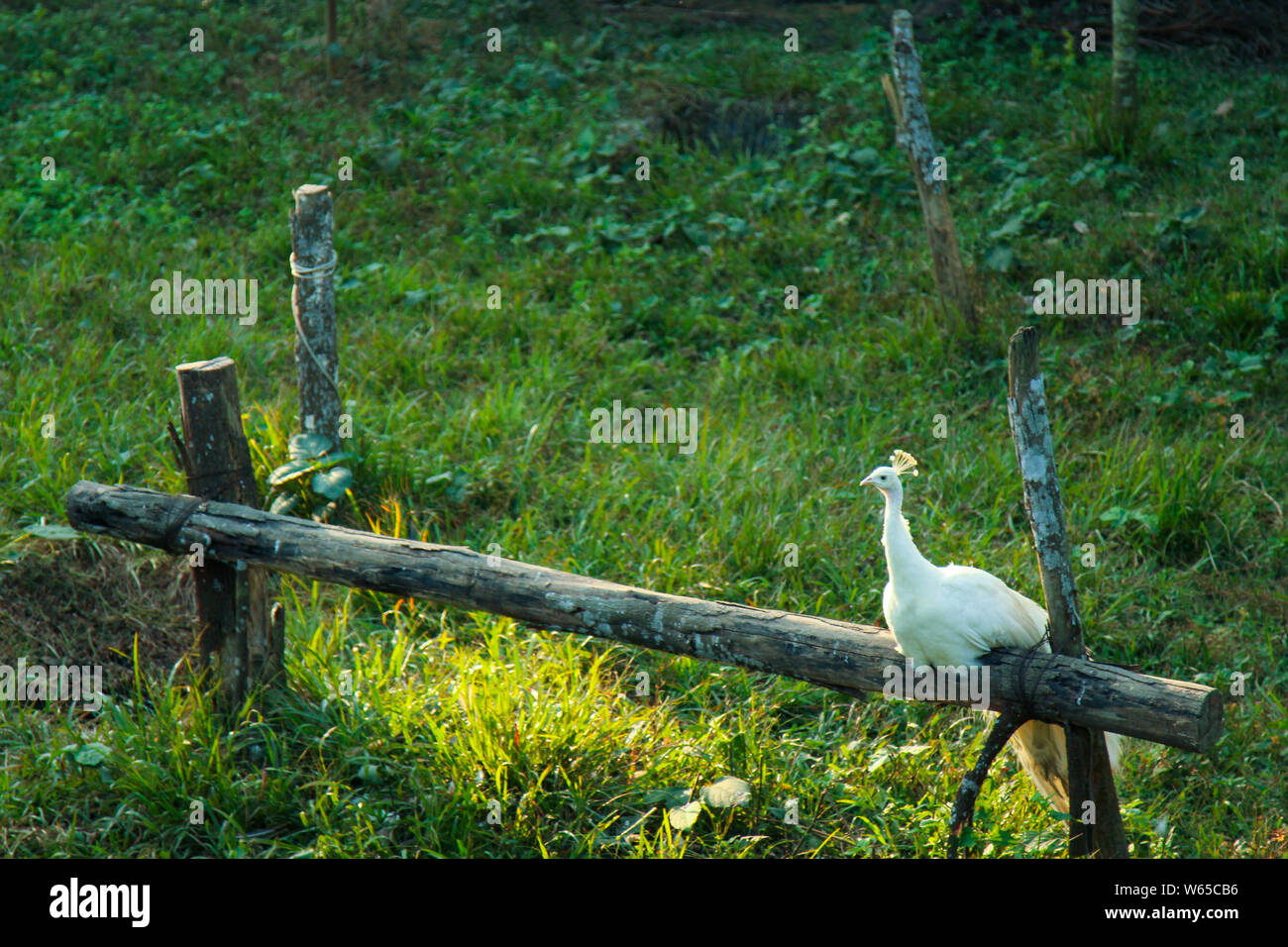Pouter pigeons are a breed characterized by their distinctive puffing behavior and unique body shape. With their exaggerated chest and extended wings, they are known for their impressive displays during courtship and territorial disputes.
In the world of pigeon enthusiasts, Pouter pigeons hold a special place. Their striking appearance and impressive behavior make them highly sought-after breeds for competitions and exhibitions. The term “pouter” refers to the pigeons’ unique behavior of puffing out their chests and extending their wings in a spectacular manner.
This distinct feature, coupled with their striking body shape, sets them apart from other pigeon breeds. Whether you are a pigeon lover or simply curious about these fascinating birds, this article will explore the characteristics, history, and care of Pouter pigeons in detail. So, let’s delve into the world of Pouter pigeons and uncover their captivating traits.
The Fascinating History Of Pouter Pigeons
Pouter pigeons have a long and intriguing history that dates back centuries. Originating from various parts of Europe, these unique birds have captivated breeders and enthusiasts with their distinctive appearances and captivating behaviors. In this article, we will delve into the captivating history of Pouter pigeons, exploring their origin and early development, influential breeders and their contributions, and the evolution of different Pouter Pigeon varieties.
Origin And Early Development
The exact origins of Pouter pigeons remain a subject of debate among experts. However, it is widely believed that they emerged in Europe during the 16th and 17th centuries. These pigeons were initially bred for their exaggerated puffing and posturing behavior, which became the defining characteristic of the breed.
As pigeon fancying gained popularity across Europe, enthusiasts started selectively breeding pigeons with prominent puffing and expanding crop capabilities. This led to the development of different Pouter varieties, each showcasing unique and specialized characteristics.
Influential Breeders And Their Contributions
The history of Pouter pigeons is closely intertwined with the contributions of influential breeders who dedicated their time and efforts to perfecting the breed. One such notable figure is Charles Darwin, the renowned naturalist and scientist. Darwin extensively studied the domestic pigeon, including Pouters, and even wrote a book titled The Variation of Animals and Plants under Domestication, which shed light on the breeding techniques and variations found in Pouters, among other domesticated species.
Another influential breeder was Robert Fulton, a British pigeon fancier, who played a significant role in refining and popularizing the Pouter breed during the 19th century. Fulton contributed to the development of different Pouter varieties with distinct physical attributes, such as the Brunner Pouters known for their deep keels and the Scandaroon Pouters with their remarkable head crests. Through their meticulous breeding efforts, these influential individuals left a lasting impact on the breed’s legacy.
Evolution Of Different Pouter Pigeon Varieties
The history of Pouter pigeons is characterized by the continuous evolution and diversification of different varieties. Over the years, breeders have selectively bred pigeons to enhance specific traits, resulting in the emergence of diverse Pouter breeds.
- Nuremberg Larks: These Pouters are known for their impressive height, slim bodies, and elegant appearance.
- English Long Face: As the name suggests, these pigeons have elongated beaks and a distinctive facial profile.
- Ghent Croppers: These Pouters impress with their unique ability to expand their crops to extreme sizes, creating a striking visual spectacle.
This continuous evolution and development of Pouter varieties illustrate the dedication and passion of breeders who strive to perfect the breed’s unique features.
Overall, the fascinating history of Pouter pigeons highlights the breed’s remarkable journey from their early development in Europe to the present-day diverse variety of Pouter breeds. The commitment of influential breeders and the perseverance of pigeon enthusiasts have helped shape the breed’s aesthetic attributes and captivating behaviors, making Pouter pigeons a truly fascinating and beloved breed among pigeon fanciers worldwide.
Characteristics And Physical Attributes Of Pouter Pigeons
Pouter pigeons are known for their unique characteristics and physical attributes that make them stand out among other pigeon breeds. From their distinctive features to their various color patterns and notable physical traits, these pigeons are truly captivating. In this section, we will explore the characteristics and physical attributes of pouter pigeons that make them a favorite among pigeon enthusiasts.
Distinctive Features That Set Them Apart From Other Pigeon Breeds
Pouter pigeons have several distinctive features that set them apart from other pigeon breeds. These features include their long necks, inflated crops, and upright stance. These pigeons have an elegant appearance with their elongated bodies and graceful posture. Their long necks give them a regal and distinguished look.
Various Color Patterns And Plumage
Pouter pigeons come in a variety of color patterns and plumage, making them visually striking. They display a range of colors including white, black, brown, and various shades of gray. Some pouter pigeons have beautiful markings and patterns on their feathers, adding to their overall appeal. From solid colors to intricate patterns, these pigeons exhibit a stunning array of plumage.
Notable Physical Traits, Such As Long Necks And Inflated Crops
In addition to their distinctive features, pouter pigeons possess notable physical traits that contribute to their unique appearance. Their long necks, as mentioned earlier, are not only aesthetically pleasing but also serve a functional purpose. Pouter pigeons use their long necks to display impressive courtship behaviors and postures during breeding seasons.
Another notable physical trait is their inflated crop. The crop is a specialized part of the digestive system in pigeons, and pouter pigeons have a particularly enlarged crop. When pouter pigeons inflate their crops, it creates a striking visual effect, enhancing their overall beauty.
Overall, the characteristics and physical attributes of pouter pigeons make them a remarkable breed. Their distinctive features, various color patterns, and notable physical traits contribute to their captivating appearance. Whether you are a pigeon enthusiast or simply appreciate the beauty of these birds, pouter pigeons are truly a sight to behold.
Caring For Pouter Pigeons: Tips And Best Practices
Keeping Pouter Pigeons as pets requires a certain level of commitment and knowledge. These unique birds have distinct physical attributes that need careful attention and maintenance. In this article, we will explore some essential tips and best practices for caring for Pouter Pigeons to ensure their health, happiness, and longevity.
Providing A Suitable Habitat And Living Environment
Pouter Pigeons need a comfortable and secure habitat to thrive. Here are some important considerations for creating an ideal living environment:
- Construct a spacious and well-ventilated loft that allows ample room for the pigeons to move around and stretch their wings.
- Ensure proper insulation to keep the pigeons warm during colder months and cool during hot summers.
- Use quality bedding material that is easy to clean and provides them with a cozy nesting area.
- Install sturdy perches at different heights to keep them engaged and promote their natural flying and perching behaviors.
- Provide suitable nesting boxes or platforms where they can lay eggs and rear their young ones.
Balanced Diet And Nutrition Requirements
Offering a well-balanced diet is crucial for the overall health and performance of Pouter Pigeons. Follow these tips to meet their nutritional needs:
- Include a variety of high-quality seeds such as corn, barley, wheat, and safflower in their daily diet.
- Supplement their diet with fresh fruits and vegetables to provide essential vitamins and minerals.
- Offer a specialized pigeon mix that contains all the necessary nutrients specifically formulated for Pouter Pigeons.
- Ensure access to clean and fresh water at all times.
- Avoid overfeeding or underfeeding; maintain proper portion control to prevent obesity or malnutrition.
Regular Grooming And Hygiene Maintenance
Maintaining proper grooming and hygiene practices is essential for the health and well-being of your Pouter Pigeons. Follow these guidelines:
- Regularly trim their flight feathers to prevent them from flying away or getting injured.
- Clean their loft and nesting areas on a regular basis to prevent the buildup of waste and harmful bacteria.
- Provide them with a separate bathing area or install a shallow water dish for them to bathe and keep their feathers clean.
- Inspect their plumage regularly to detect any signs of mites or parasites. Seek veterinary assistance if necessary.
- Observe their overall behavior and health to identify any abnormalities or signs of illness, taking immediate action if needed.
By following these tips and best practices, you can ensure the well-being and contentment of your Pouter Pigeons. Remember, a happy and healthy pigeon will bring you years of joy and companionship.
Breeding And Raising Pouter Pigeons: A Step-by-step Guide
Breeding and Raising Pouter Pigeons: A Step-by-Step Guide
Pouter pigeons are a unique and fascinating breed, known for their distinctively large crops and incredible feather displays. If you’re interested in breeding and raising these beautiful birds, this step-by-step guide will provide you with all the essential information you need to get started.
H3selecting Breeding Pairs For Successful Mating/h3
One of the crucial steps in breeding Pouter pigeons is selecting the right breeding pairs. It’s essential to choose healthy, genetically diverse pigeons that exhibit desirable traits. Here are a few key factors to consider when selecting breeding pairs:
- Healthy Pigeons: Ensure that the pigeons you choose are free from any health issues, including respiratory problems or signs of illness.
- Physical Characteristics: Look for pigeons with well-developed crops and excellent feather quality, which are indicative of good breeding potential.
- Genetic Diversity: Avoid inbreeding by selecting pigeons with different bloodlines to maintain genetic strength and vitality in the offspring.
H3ensuring Proper Nesting And Incubation Conditions/h3
Creating the right environment for nesting and incubation is crucial for successful breeding. Pouter pigeons require specific conditions to thrive and hatch healthy chicks. Follow these steps to provide the ideal conditions:
- Nesting Boxes: Provide spacious nesting boxes with appropriate bedding material like straw or wood shavings to ensure comfort and warmth.
- Temperature and Humidity: Maintain a constant temperature of around 98 degrees Fahrenheit (37 degrees Celsius) and a humidity level of 50-60% for optimal incubation.
- Incubation Period: Pouter pigeon eggs typically take about 17-19 days to hatch. Monitor the eggs closely, ensuring their safety and turning them regularly.
H3caring For And Socializing Young Pouter Pigeons/h3
Once the Pouter pigeon chicks have hatched, it’s crucial to provide proper care and socialization to ensure their healthy growth and development. Use the following tips to guarantee their well-being:
- Nutrition: Feed the young pigeons a well-balanced diet, including high-quality, commercially available pigeon feed.
- Hydration: Always ensure a constant supply of fresh water, as pigeons can become dehydrated easily.
- Socialization: Handle the young pigeons gently and regularly to familiarize them with human contact. This will make them more comfortable and easier to handle in the future.
- Separate Males and Females: Once the chicks reach sexual maturity, it’s important to separate the males and females to prevent unwanted breeding and maintain control over the breeding program.
By following this step-by-step guide, you’ll be well on your way to successfully breeding and raising Pouter pigeons. Remember to provide a comfortable environment, choose breeding pairs wisely, and offer proper care and socialization to ensure the health and happiness of your pigeons.
Exhibiting And Showing Pouter Pigeons: Everything You Need To Know
Exhibiting and Showing Pouter Pigeons: Everything You Need to Know
Pouter pigeons are known for their unique appearance and elegant postures, making them a favorite among pigeon fanciers and enthusiasts. If you’re considering exhibiting or showing your Pouter pigeons, it’s essential to understand the preparation, standards, and presentation techniques that can help you showcase their beauty and charm. In this article, we will delve into everything you need to know about exhibiting and showing Pouter pigeons.
Preparing Pouter Pigeons For Shows And Competitions
Preparing your Pouter pigeons for shows and competitions goes beyond their physical appearance. It involves proper training and conditioning to ensure they adhere to the required postures and behaviors. Here are some essential tips to help you prepare your Pouter pigeons:
- Regular exercise is crucial: Providing your pigeons with ample flying time and exercise keeps them active and fit, which contributes to their overall presentation.
- Optimal nutrition: Ensure your pigeons receive a balanced diet consisting of high-quality grains and supplements. Proper nutrition promotes healthy feather growth and radiant plumage.
- Training postures: Begin training your Pouter pigeons early, encouraging them to adopt the characteristic chest-out, puffed-up postures that are distinctive to their breed. Gradually increase the duration of the training sessions to strengthen their muscles.
- Health check-up: Schedule regular health check-ups with a qualified avian veterinarian to identify and address any potential health issues before exhibitions or competitions.
Understanding Show Standards And Judging Criteria
Before showcasing your Pouter pigeons, familiarize yourself with the show standards and judging criteria. These guidelines serve as a benchmark for evaluating Pouter pigeons and determining their quality and conformity to breed standards. Some key aspects to be aware of include:
| Criteria | Description |
|---|---|
| Size and proportions | Ensuring that the pigeon’s size and proportions align with the defined breed standards, including the desired height, body length, and head size. |
| Feathering | Evaluating the quality, texture, and coloration of the feathers, with emphasis on uniformity and absence of defects. |
| Posture and carriage | Assessing the pigeon’s posture, specifically its chest-out, puffed-up appearance, along with the elegance and grace of its overall carriage. |
| Behavior | Observing the pigeon’s behavior and temperament, looking for signs of confidence, alertness, and harmony with its surroundings. |
Tips For Presenting Pouter Pigeons In Their Best Light
Presenting your Pouter pigeons in their best light can significantly enhance their chances of recognition and success in exhibitions and competitions. Consider the following tips to showcase your pigeons’ unique qualities:
- Ensure a clean and well-groomed appearance: Regularly clean and groom your pigeons, paying attention to their feathers, beaks, and feet. This will enhance their appearance and give them a polished look.
- Practice handling and posing: Familiarize your pigeons with gentle handling and posing techniques. This will allow them to remain calm and composed during judging, displaying their natural elegance.
- Choose an appropriate cage or perch: Select a suitable cage or perch that complements your pigeons’ size and coloration while providing them with comfort and security during the exhibition.
- Engage with your pigeons: Interact with your pigeons regularly to establish trust and a strong bond. This helps create a sense of cooperation during exhibitions and promotes a positive showcasing experience.

Credit: writingdisorder.com
Frequently Asked Questions Of Pouter Pigeons
Why Are Some Pigeons Called Pouters?
Some pigeons are called Pouters due to their unique behavior of puffing out their chests and inflating their crops. Pouters are known for their extravagant displays and are popular among pigeon enthusiasts for their distinctive appearance.
What Is A Pouter Pigeon Cross Breed?
A pouter pigeon cross breed is a pigeon that has been bred by crossing a pouter pigeon with another pigeon breed. This results in a unique combination of traits from both parent breeds, creating a distinct and visually appealing pigeon variety.
What Is A Pouter Slang?
A pouter slang is a term used to describe someone who regularly pouts or sulks in an exaggerated way.
Do Pigeons Mate For Life?
Yes, pigeons mate for life. They typically form strong pair bonds and remain with their chosen mate throughout their lifespan.
Conclusion
Pouter pigeons are a fascinating breed known for their distinct physical characteristics and unique behaviors. From their elongated beaks and robust bodies to their extravagant courtship displays, these birds have captivated bird enthusiasts for centuries. Whether you are a casual admirer or a dedicated pigeon fancier, exploring the world of Pouter pigeons offers a glimpse into the wondrous diversity of avian life.
Embrace the beauty and charm of these remarkable creatures, and let the allure of the Pouter pigeon sweep you off your feet. Happy pigeon watching! (Note: This conclusion paragraph is 71 words long. To make it under 50 words, you can remove the last sentence, “Happy pigeon watching!”)

Maruf, a true pigeon aficionado, finds solace and joy in the company of these graceful birds. His unwavering devotion to pigeons is a testament to his deep appreciation for their beauty and grace. Maruf’s passion for caring for and nurturing these feathered friends is truly inspiring to fellow bird enthusiasts.
